- Courses
- Zoom Training
- Configure your Audio and Video

Interactive Tutorial
Configure your Audio and Video

4.9 out of 5 on G2
Try this course with a Free Trial
Interactive Tutorial
Try It Now📖 Zoom Course
View Course📄 Zoom Cheat Sheet
Download Cheat Sheet🔍 Reference Guide
Reference Guide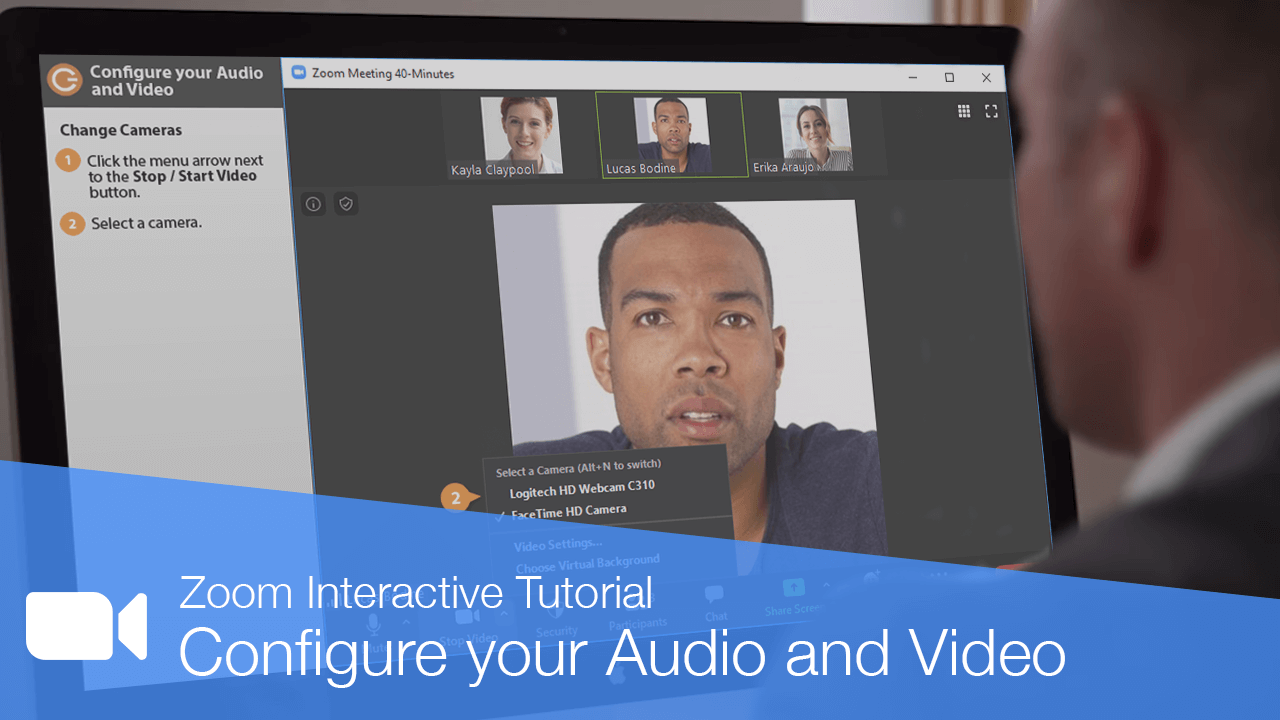
If your computer setup has multiple cameras, microphones, and audio outputs, you can choose from them during a Zoom meeting.
| Meeting Controls | |||
|---|---|---|---|
| Mute / Unmute | Toggle your microphone off or on. If you’re not talking, keep your microphone muted so that background noise does not disrupt the meeting. While your microphone is muted, you can press and hold the spacebar to temporarily unmute yourself. You can also click the menu arrow next to the Mute / Unmute button to change your microphone or speaker or access other audio settings. | ||
| Stop / Start Video | Toggle your camera off or on. Depending on the etiquette of the group, you may turn off your camera when not actively participating to reduce distractions. You can also click the menu arrow next to the Stop / Start Video button to change the camera used for the meeting, change your virtual background, or change other video settings. | ||
| Security | Control several security settings for your meeting. You can lock the meeting, toggle whether to use a waiting room, and control whether participants can mute themselves, toggle their camera, or share their screen. | ||
| Manage Participants | Pop out the Participants pane, where you can see who is in the meeting and who is in the waiting room. You can mute specific people, mute everyone, invite new people, and remove people from the meeting. | ||
| Chat | Pop out the Zoom Group Chat pane, where you can send chat messages to everyone else in the meeting, or choose a specific person to send a message to. You can also share files here. | ||
| Share Screen | Lets you share your entire screen, a single window, or a whiteboard that you and meeting attendees can draw on. | ||
| Record | Record a video of the meeting. Depending on the features of your account, you can record a meeting to the cloud or to your computer. | ||
| Reactions | Display a reaction emoji on the screen that other meeting participants can see. You can choose from a hand raise emoji, or an applause emoji. | ||
Mute and Unmute
Your microphone status is represented by an icon on the toolbar at the bottom of the Zoom window. If you’re not going to be doing much talking during a meeting, muting your microphone will prevent any distracting noises from your end from interrupting the speaker.
- Click the Mute button to mute your microphone.
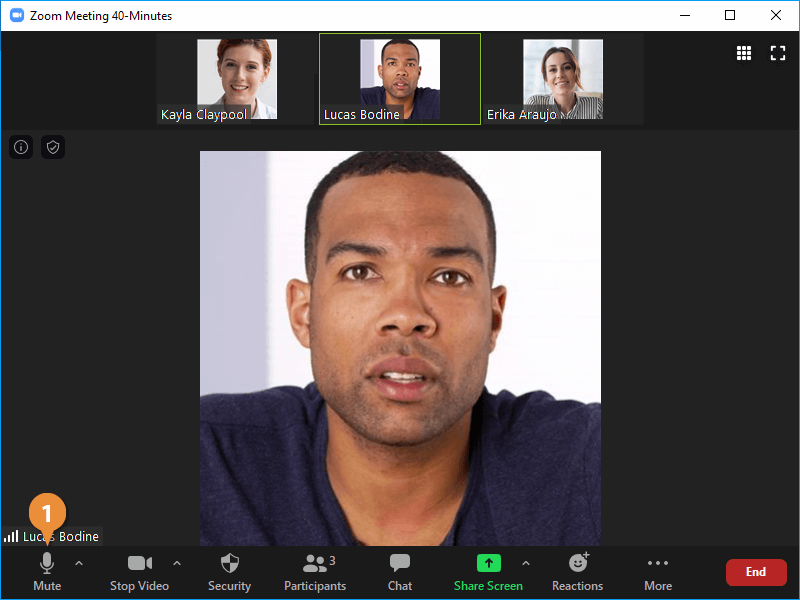
While your microphone is muted, a slash will appear over its icon.
- Click the Unmute button to unmute your microphone.
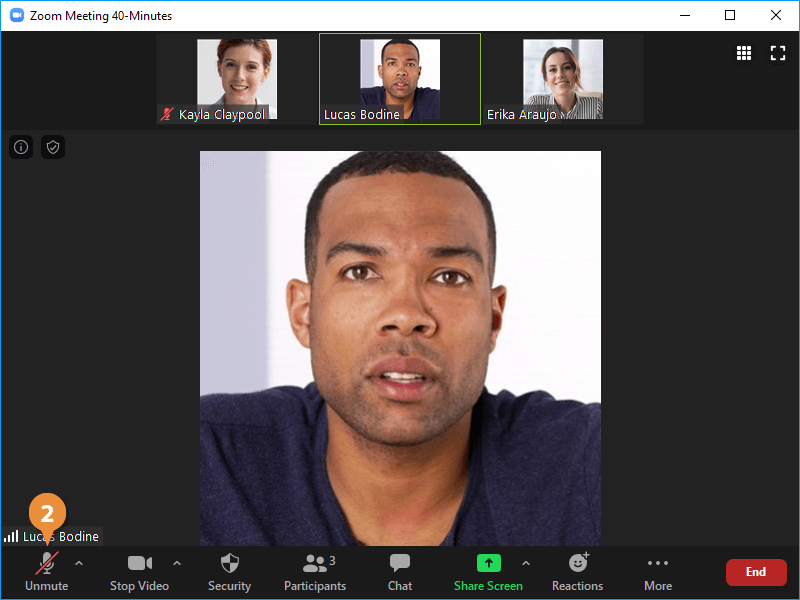
Your microphone is unmuted.
Toggle your Camera
Just like your microphone status, your camera status is also indicated on the toolbar at the bottom of the Zoom window. You can toggle your camera off when you don’t want other participants to see you or your surroundings.
- Click the Stop Video button to turn your camera off.
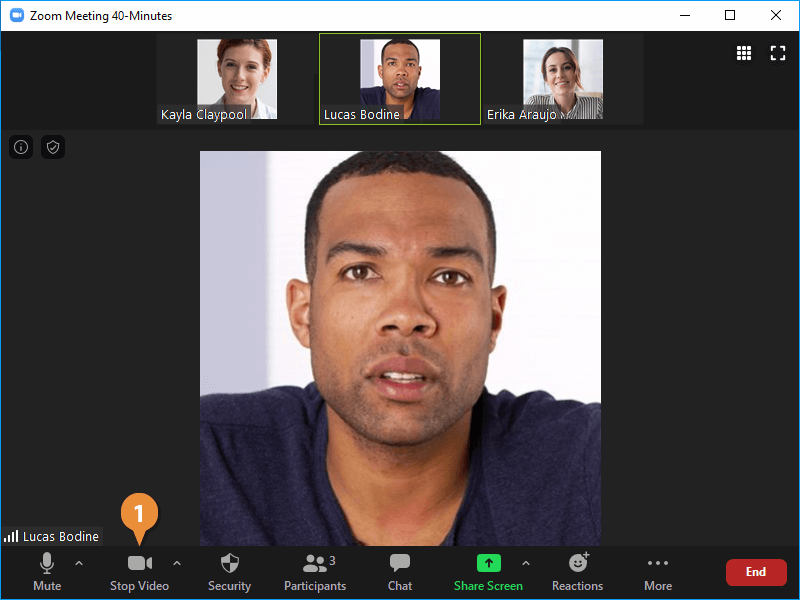
While your camera is off, your video thumbnail in the meeting is replaced by your initials.
- Click the Start Video button to turn your camera on.
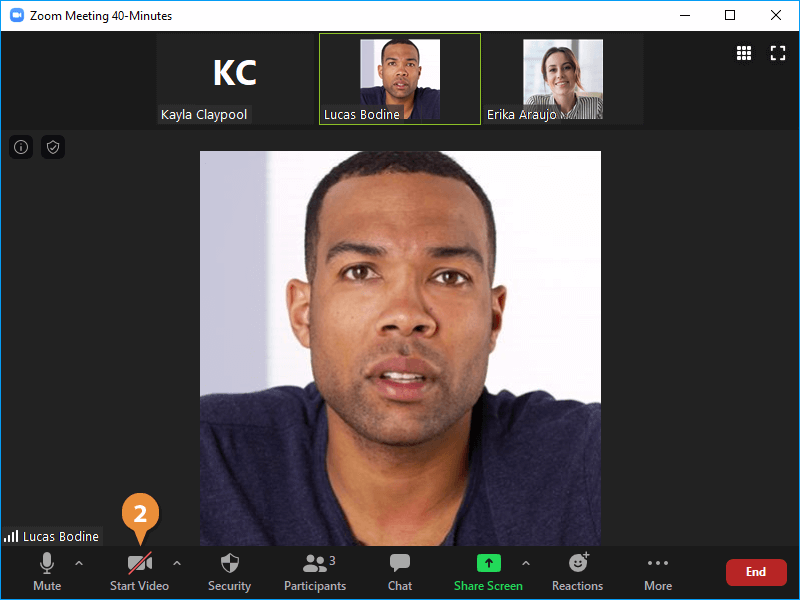
Your camera turns back on, and you resume sending video to the meeting.
Change Audio Devices
If you have multiple microphones and speakers—for example, a headset with a microphone in addition to a laptop's built-in speaker and microphone—you can choose which ones you want to use.
- Click the menu arrow next to the Mute / Unmute button.
This menu shows all of your available microphones and speakers. Now you can choose the best setup for you.
- Select a microphone or speaker that you want to use.
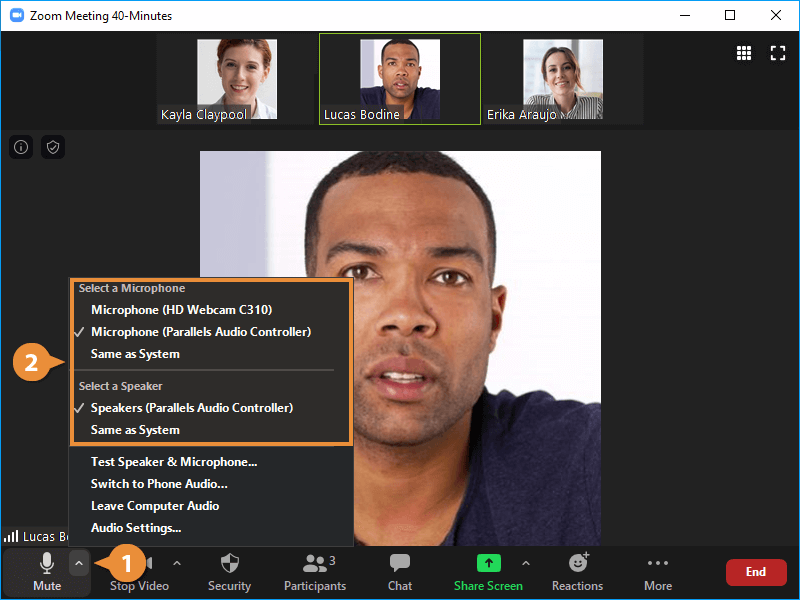
Zoom switches to the selected audio device. You can mix and match microphones and speakers—for example, using a headset’s speakers but a separate microphone—until you have your ideal setup.
Change Cameras
If you have multiple cameras, you can also switch between those.
- Click the menu arrow next to the Stop / Start Video button.
All of the cameras that are available are listed.
- Select a camera.
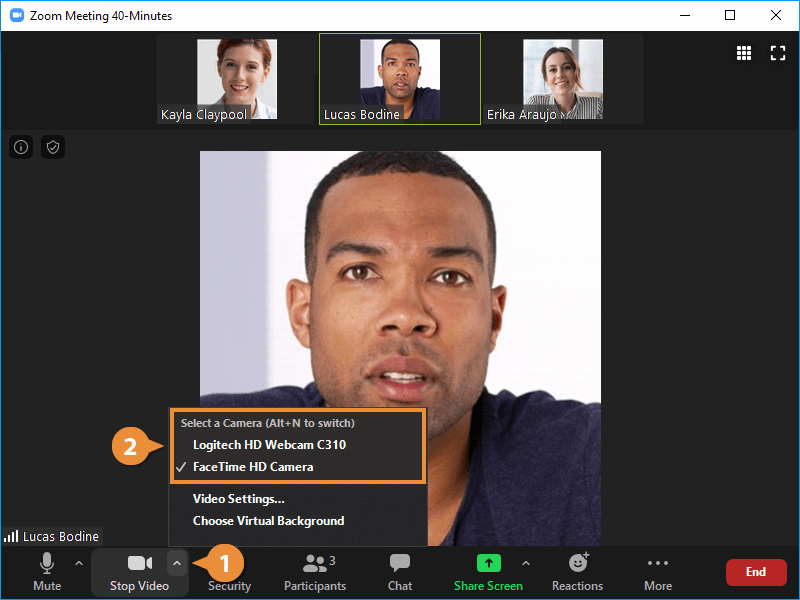
Zoom changes the camera used to transmit video.